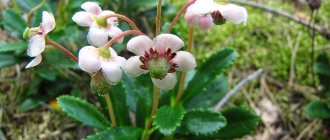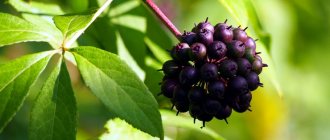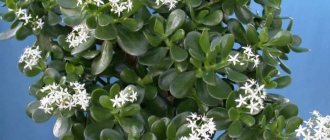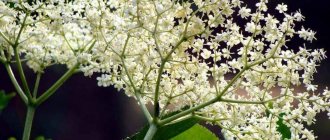How to make useful remedies from plants at home?
It is very easy to prepare medicinal preparations yourself - just cut off the leaves of a 3-year-old succulent, put them in the refrigerator for 2 weeks, and then chop them and pass them through cheesecloth. Pour the resulting juice into a glass container and let stand for 3-4 hours. Ready!
Now you can use the remedy to treat most of the diseases that bother you:
- from a runny nose and sore throat;
- for the treatment of otitis and conjunctivitis;
- as a compress for burns and wounds;
- with prolonged constipation;
- for diseases of the digestive system;
- as an immunostimulant.
How to make drops for a runny nose?
Aloe is an excellent remedy for treating colds. The drops have no contraindications and have a range of advantages:
- treat chronic and acute rhinitis;
- improve the condition of the sinuses during sinusitis;
- relieve allergic reactions, manifested in the form of a runny nose;
- have an immunostimulating effect.
First of all, you need to select the largest and juiciest leaves, wash them and dry them, and then separate the pulp from the skin, from which you can extract the juice.
There are several recipes for making nasal drops:
- First, you need to squeeze the juice from the aloe gel and dilute it with water in a ratio of 1:2 (for children - 1:3). Instill 4-5 times a day, 3-5 drops into each nostril.
- To this solution you can add 2 cloves of garlic soaked in warm water. This remedy will be more effective.
- There is an option with the addition of 1 teaspoon of honey. Typically, this remedy is used for acute rhinitis.
- When treating sinusitis, a gauze swab is often used. To do this, you need to twist a small strip of gauze, moisten it in the prepared solution and place it in the sinuses for an hour.
Important! The gel is effective only for colds; to treat viruses, it is necessary to choose another medicine.
Medicine for a sore throat
Often, when a sore throat starts to hurt, people run to the pharmacy for medicine. But it is worth paying attention to the means at hand. In many homes you can find aloe as a houseplant. Its juice copes well with tonsillitis and sore throat, destroying their causative agents - streptococci and other harmful bacteria.
In addition, the succulent will improve your general condition and increase immunity. How to properly prepare a miracle cure? In its pure form, it can be used, but the juice is quite bitter, so you can make a mixture of several components.
Options for preparing medicine for sore throat:
- Add wine and natural honey to aloe juice in proportions 1:1:2, respectively. Take 1 tbsp. half an hour before meals. The resulting solution can be placed in the refrigerator and used within 5-6 days - this mixture is stored for a long time.
- A recipe without wine is suitable for children: you need to mix the juice from 2 leaves of the plant and 1 tsp. honey Use 1 teaspoon 3 times a day, sucking the resulting mixture and then swallowing it. Improvement will not take long to arrive.
- The juice of this succulent with milk also has a healing effect. You need to add 1 tsp to a glass of warm milk. plant juice. You need to drink this remedy immediately or during the day in 3 doses (you should not warm it up again - the aloe will lose its healing properties). For children, it is enough to take half a teaspoon of plant juice per glass.
- For severe inflammation of the tonsils, a recipe containing 7 ml of a 100 percent alcohol solution of propolis and 15 ml of Kalanchoe juice, a plant from the genus of succulents that has an antiseptic and anti-inflammatory effect, is suitable. Add 1 tbsp to the resulting mixture. honey Heat the solution in a water bath for 30 minutes. Then it should be supplemented with 15 ml of aloe juice. This mass must be lubricated on the tonsils for a week. It can also be used in inhalations - you need to add a few drops of the product to hot boiled water.
You can also rinse by diluting the plant juice with water in equal proportions.
How to use aloe to treat otitis media?
Aloe will also help if you have otitis media. The prepared remedy will reduce pain, remove inflammation and help ensure the drainage of pus.
There are several ways to use the plant to treat inflammation in the ears:
- 1-2 drops of pure plant juice are instilled into the patient’s ear using a pipette. For acute forms, this is done 3 times a day, for prevention - 1 time a day.
- Mix aloe and Kalanchoe juice in a 1:1 ratio and drip 1-2 drops 2 times a day. Treatment is carried out for 2-3 weeks.
Important! You should not use aloe for a long time, as this leads to addiction and side effects. We should not forget that serious forms of the disease require complex treatment.
For constipation
For a laxative effect, latex is used in medicine - a yellow liquid extracted from under the skin of a plant leaf. It contains barbaloin, which stimulates movement in the intestinal walls. The latex of the plant helps only with atonic and acute constipation.
In folk medicine, aloe juice extracted from the gel can be used to eliminate this delicate problem. You should take no more than 2 teaspoons 3 times a day and no more than 3 days. The juice should not be subjected to heat treatment, otherwise it will lose its healing properties.
Important! Aloe latex has a very pronounced laxative effect and has a strong effect on the kidneys. Preparations based on it are available by prescription and should be used with great caution. The use of the plant as a laxative is contraindicated for pregnant women and people with peptic ulcers of the stomach and duodenum.
Compress on wounds
Aloe has an antiseptic and anti-inflammatory effect, therefore it is widely used for disinfection and treatment of burns, wounds, suppuration and abscesses.
How to use it correctly:
- First you need to treat the wound with a disinfectant. Chlorhexidine and hydrogen peroxide are suitable.
- Then you need to moisten the bandage in aloe juice and apply it to the affected area.
- The compress must be fixed and kept for 8-10 hours.
For faster healing, the following components can be added to the plant juice (3 tbsp):
- sea buckthorn oil – 1 tbsp;
- glycerin – 100 g;
- lemon juice – 1 tsp;
- St. John's wort – 3 tablespoons;
- yarrow – 1 tbsp. (before mixing with aloe, pour boiling water and leave for 15 minutes).
Immunity booster
None of us could use strengthening our immune system, and for some it is vital. Aloe has a pronounced immunostimulating effect.
There are several popularly proven recipes:
- The juice is mixed with honey in a ratio of 1:4. This solution should be taken 1 tbsp. before meals for 3 weeks.
- Add the juice of 2 lemons and aloe, as well as 100 g of honey to chopped walnuts (100 g). Use 1 tbsp daily for 2 weeks. (children - 1 tsp) before meals.
- You can also make tea that strengthens the immune system. To do this, you need to infuse dried hawthorn fruits (20 g) for 24 hours, strain the resulting liquid and add aloe juice (20 ml) to it. You need to drink this tea before bed for 1 week.
For gastritis and stomach ulcers
It is not always recommended to use aloe for stomach ulcers. Before treating the stomach, you should consult your doctor, as it may cause side effects.
The juice of the medicinal plant should be taken orally, mixed with honey in a 1:1 ratio. Action depending on the type of disease:
- with low acidity, this mixture will reduce bloating and reduce gas formation, and also stimulate gastric secretory function;
- with increased acidity, the elixir will eliminate heartburn and relieve pain.
How to prepare a hair mask?
Preparation of the mask depends on the desired effect:
- To accelerate hair growth 1 tbsp. aloe must be mixed with 1 tbsp. castor oil and 1 yolk. Then apply to hair, wait half an hour and rinse thoroughly.
- For dandruff - 2 tbsp. mix plants with 1 tsp. castor oil, 1 tbsp. honey and 1 tsp. lemon juice. Heat the mask in a water bath, rub into the scalp and leave for half an hour.
- For hair loss - 1 tsp. garlic juice, 1 tbsp. aloe, mix 1 yolk and place on your hair, wrapping your head in a plastic bag. After half an hour, wash off.
- To strengthen - to 1 tbsp. succulent juice, add 2 yolks and 5 drops of vitamins A and E. Apply to the head, wait half an hour.
Anti-wrinkle remedy
Aloe copes well with age-related changes thanks to vitamins, amino acids and allantoin. Application depends on the areas of the face:
- Around the eyes, mix the plant juice with vegetable oil. Apply morning and evening every day.
- On the forehead - you will need 20 g of aloe juice, 10 g of oatmeal, 20 ml of water, honey and glycerin. Mix the ingredients and apply to the desired areas. Wash off after 20 minutes.
- On the cheeks - mix 60 g of chopped cucumber and medicinal plant juice with 20 ml of yogurt. Apply for 15 minutes. and then rinse off.
Aloe Vera Care
Of course, looking at various photos of aloe, many want to place the same beauty in their home. But they believe that this plant is difficult to care for. However, it is not. Aloe vera is an unpretentious plant that can tolerate environmental troubles. If you place it in comfortable conditions, it can please you with its good growth and beautiful appearance.
How should you care for a flower at home? Here are some recommendations that should be followed.
Watering
Watering is recommended when the soil dries out. Usually in summer they water every 3 days, and in winter about 2 weeks. There is no need to flood, as this provokes rot on the roots.
Due to the fact that the roots that take moisture are located at the very bottom of the pot, bottom watering is often used. With this method, the pot is placed in a tray with life-giving moisture for 10-15 minutes.
The water should be warm and settled. It is advisable not to allow it to get into the center of the aloe rosette. After some time, wipe the leaves with a damp cloth to avoid dust. No spraying required.
How to replant
It is recommended to replant an adult plant once every 2 years, a young one - once a year. The most favorable time is spring. A drainage layer (5 cm) must be placed on the bottom. For replanting, take a ceramic pot and soil “For cacti and succulents”. You can prepare the soil yourself by taking 4 parts universal soil and 1 part coarse sand.
So, let's imagine that we already have a pot of soil and the plant is ready for planting. Now we perform the transplant in the following sequence:
- Pre-moisten the soil.
- Make a recess.
- Add some sand there.
- Insert plant.
- Sprinkle with sand and soil.
- To provide stability, it is advisable to place pegs.
- Cover the transplanted aloe with a plastic bag, leaving room for air underneath.
- Place the pot on a windowsill where there is more sun.
- When young leaves appear, remove the bag.
At this point, the transplant process can be considered complete. The branches have young leaves - this means that the aloe has taken root.
Priming
To loosen the soil, add a small amount of charcoal and hydrogel (if it is not there, then brick crumbs will come off). The soil has low acidity.
What are the problems with aloe vera?
- Root rot. This disease occurs when the plant is uncontrolled. Usually the aloe vera is dug up, all soft and dark roots are removed, and the healthy ones are left. After this, the plant is placed in another pot with new soil.
- Dry rot. Aloe vera dries out. The chances of saving are low.
- Pulling out a flower. A similar problem occurs due to insufficient light or due to the low temperature of the water for irrigation.
- Scale insect, false scale insect. Brown plaques appear at the bottom of the leaves.
- Red spider. To get rid of it, aloe is treated with special means.
Description of the plant
The height of the flower reaches no more than 30 centimeters. The leaves of the plant are located on rosettes at the roots or small stems. Rows are twisted around the shoot in the form of a spiral. They grow no more than 15 centimeters in length. They have small spikes along the edges.
The color of the leaves is dark green with stripes and spots of a snow-white hue. There is a snow-white stripe along the edge of the plant. Thanks to such an unusual color, the plant was called variegated or tiger. The flower trunk is wide at the base.
The root system of the flower is very powerful. The flowers reach no more than 3.5 centimeters in length. The height on the peduncles is no more than 30 centimeters. The perianth inside is amber, the outside is pink-burgundy with emerald stripes. It has miniature bell-tubular flowers and an erect peduncle.
Planting should be done in spring or autumn. It is better to choose large containers.
The roots should not be allowed to press tightly against the walls of the pot.
Soil composition: coarse sand / leaf soil / turf soil. Neutral soil acidity is suitable. Tiger aloe has a powerful root system. Therefore, young aloe is transplanted into larger containers every spring, and adult aloe – after two to four years. After purchase, replanting is done in nesting doll pots in soil with a mixture of coarse sand and rotted compost. The two-centimeter top layer should be small stones or expanded clay.











